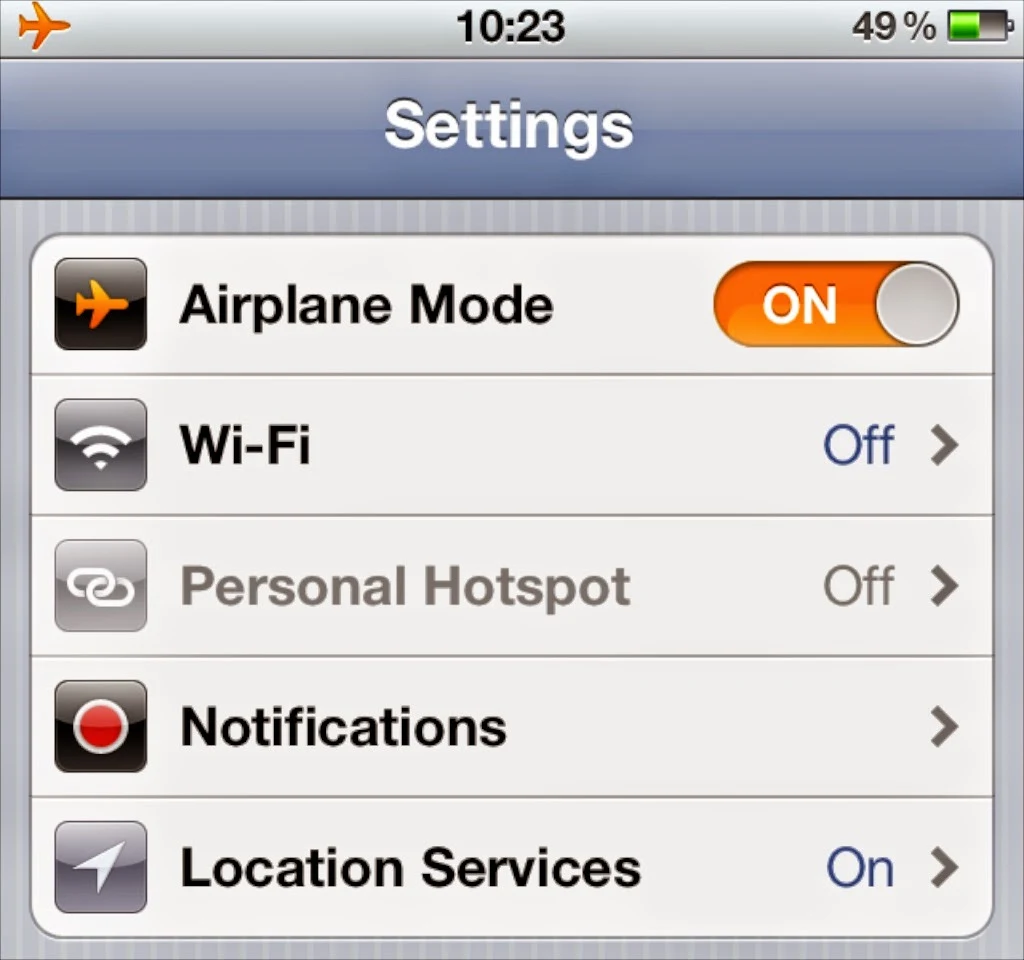If you want to know the function of the Airplane mode, then it is used to disable the device’s Bluetooth, Wi-Fi and cellular radio in short the functions
related to the wireless transmissions. Now with the turning of time, there are several airplanes, which are offering airplanes in-flight Wi-Fi access
together with cellular accessibility, and this brings us to the question, what will the function of airplane mode come to use as of now?
Well, it is not necessary for you to fly only to operate the Airplane mode. In fact, even if you have never flown, in your device itself, you will come across the Airplane mode, which acts as one of the quickest of ways to disable your device’s battery-draining radios. It has the ability to likewise, increase the life of your device’s battery, as you will not be using the present wireless radios that are there in your device.
Function of Airplane mode:
Whatever type of device you are use, be it a Smartphone, iPhone, an Android, Windows 8 tablet, an iPad or whatever it is, the function of the Airplane mode is the same everywhere and it ends up disabling the same hardware function in each of the above devices.
i. Device will stop communicating with the cell towers:
If it is a cellular device, your device will suddenly stop communicating with the cell towers as soon as you bring it to an activation mode. You will be unable to receive or even send anything and this depends on the cellular data, right from sending messages to voice calls.
ii. Stop the scanning of Wi-Fi networks:
If it comes under the Wi-Fi category, your phone will eventually stop scanning any kind of Wi-Fi networks that is present close by, and will not attempt to join them. Even if you are linked to a Wi-Fi network, you will end up getting disconnected.
iii. Disable the Bluetooth:
This Airplane mode also ends up disabling the devices Bluetooth connection, which is a wireless communication technology that people generally utilize with the help of wireless headsets. But Bluetooth can be easily used for other things such as the mouse or keyboard and many more.
iv. Disable the GPS functions:
You will also end up being disabled with your GPS functions, mostly the receiving functions in many of the devices. This tends to be a bit consistent and confusing also.
Well, it is not necessary for you to fly only to operate the Airplane mode. In fact, even if you have never flown, in your device itself, you will come across the Airplane mode, which acts as one of the quickest of ways to disable your device’s battery-draining radios. It has the ability to likewise, increase the life of your device’s battery, as you will not be using the present wireless radios that are there in your device.
Function of Airplane mode:
Whatever type of device you are use, be it a Smartphone, iPhone, an Android, Windows 8 tablet, an iPad or whatever it is, the function of the Airplane mode is the same everywhere and it ends up disabling the same hardware function in each of the above devices.
i. Device will stop communicating with the cell towers:
If it is a cellular device, your device will suddenly stop communicating with the cell towers as soon as you bring it to an activation mode. You will be unable to receive or even send anything and this depends on the cellular data, right from sending messages to voice calls.
ii. Stop the scanning of Wi-Fi networks:
If it comes under the Wi-Fi category, your phone will eventually stop scanning any kind of Wi-Fi networks that is present close by, and will not attempt to join them. Even if you are linked to a Wi-Fi network, you will end up getting disconnected.
iii. Disable the Bluetooth:
This Airplane mode also ends up disabling the devices Bluetooth connection, which is a wireless communication technology that people generally utilize with the help of wireless headsets. But Bluetooth can be easily used for other things such as the mouse or keyboard and many more.
iv. Disable the GPS functions:
You will also end up being disabled with your GPS functions, mostly the receiving functions in many of the devices. This tends to be a bit consistent and confusing also.





